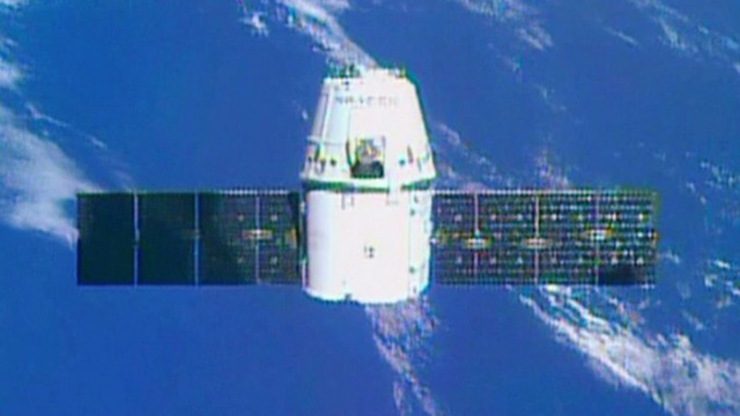SUMMARY
This is AI generated summarization, which may have errors. For context, always refer to the full article.

WASHINGTON DC, USA (UPDATED) – SpaceX’s unmanned Dragon spacecraft splashed down in the Pacific Ocean on Saturday, October 25, carrying a heavy load of NASA cargo and scientific samples from the International Space Station (ISS) that experts hope could yield significant results.
A boat was ferrying the spacecraft to a port near Los Angeles, where NASA said the haul of 1.5 tons of experiment results and other materials will be removed and returned to the space agency by late Monday for scientists to pick apart.
Dragon also carried crew supplies, hardware and computer resources.
The investigations in the cargo could help develop more efficient solar cells and semiconductor-based electronics, as well as grow plants better suited for space and improve sustainable agriculture, according to NASA.
“This mission enabled research critical to achieving NASA’s goal of long-duration human spaceflight in deep space,” said Sam Scimemi, director of the International Space Station division at NASA headquarters.
Dragon, which spent a month at the space station, will later travel back for processing to SpaceX’s test facility in McGregor, Texas.
Astronauts at the ISS had manipulated the orbiting lab’s robotic arm to detach Dragon on time, at 1357 GMT, in what NASA called a “very clean release.”
The capsule splashed down five-and-a-half-hours later, at 1939 GMT, near the Mexican coast, slowed by three enormous parachutes.
Space traffic
The SpaceX vessel is the only spacecraft currently capable of returning from the ISS with cargo. Its last mission to the space station was in April. (READ: SpaceX supply capsule berths at ISS)
Then it delivered cargo including freeze-dried meals, 20 live lab mice and a 3D printer, in its fourth contracted mission to the ISS.
The lab mice were the first live mammals to hitch a ride aboard a commercial cargo ship, and they are enclosed in a NASA-made research cage for studying the effects of weightlessness on their bodies.
The 3D printer is the first of its kind to demonstrate how the technology can be used in space, even without gravity to assist the process.
The Dragon return kicks off a week of heavy traffic to and from the orbiting science lab.
Late Monday, October 27, Orbital Sciences is scheduled to launch its unmanned Cygnus capsule from the Wallops Island space center, on the coast of Virginia, and should arrive November 2 at ISS at the same dock that held Dragon.
And on Wednesday, October 29, the Russian cargo ship Progress is set to take off for the ISS, replacing a sister vessel due to break away from the orbiting station and return to Earth on Monday.
Three of the six ISS crew members are also preparing to leave the lab after 165 days in orbit. They are set to ride in a Russian Soyuz craft on November 9.
Their three replacements, a Russian and two Americans, should arrive on November 23.
NASA lost its ability to reach the space station alone when the shuttle program ended in 2011 after 30 years.
The US space agency has helped fund private companies in the race to restore US access to the ISS. (READ: Boeing, SpaceX to send astronauts to space station)
In 2010, SpaceX became the first private company to send a spacecraft to the ISS.
The company is run by Internet mogul Elon Musk, who built his fortune by co-founding PayPal. He also heads Tesla Motors. – Rappler.com
Add a comment
How does this make you feel?
There are no comments yet. Add your comment to start the conversation.